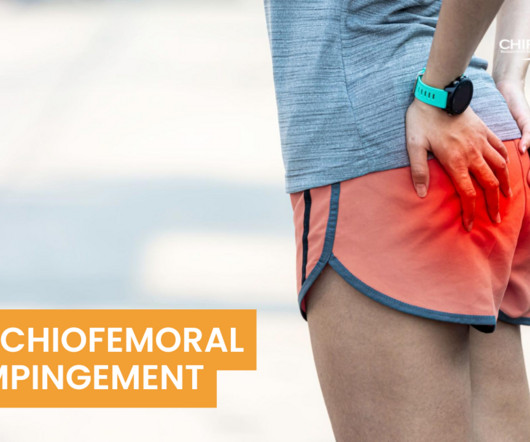Understanding Ischiofemoral Impingement: Diagnosis and Management for Chiropractors
ChiroUp
MAY 1, 2025
53) It has also been identified in 9% of younger patients undergoing evaluation for joint-preserving surgery. (54) 9,24-26,50) Deeper dive: Like nearly every other MSK diagnosis, there is no single clinical exam finding specific to the diagnosis of ischiofemoral impingement. 2015 Jun;44(6):831-7. Skeletal radiology.














Let's personalize your content